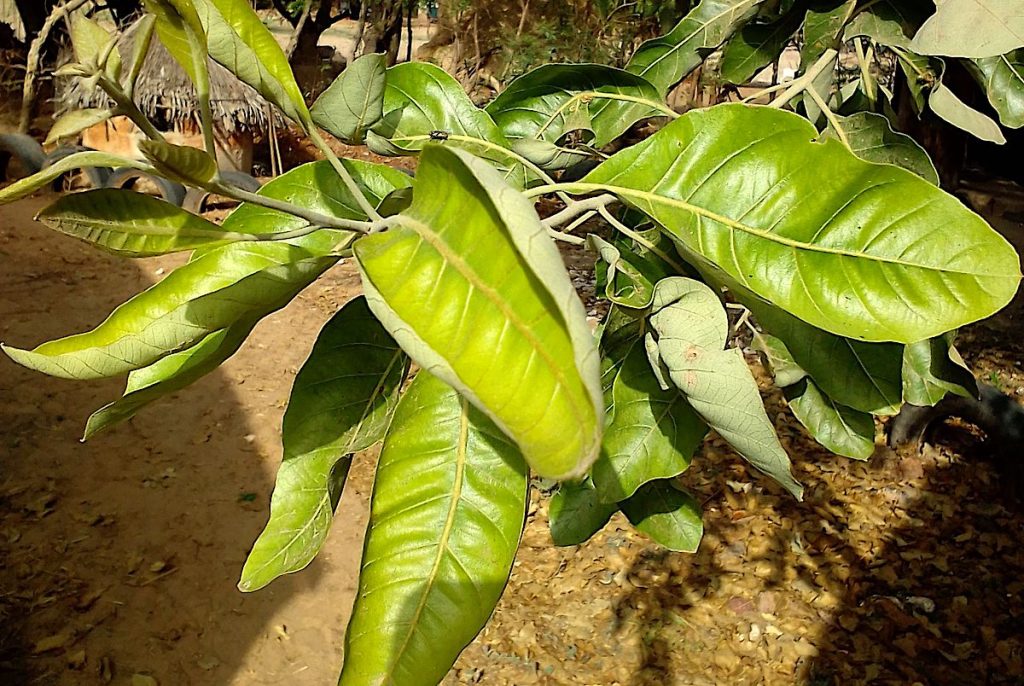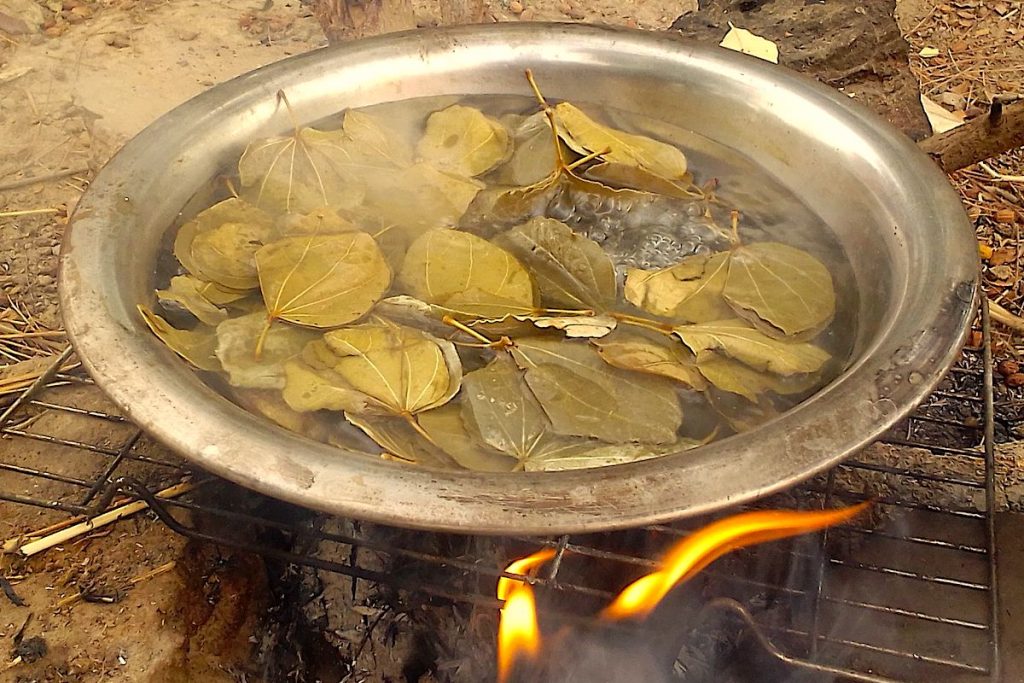Many regular visitors to The Gambia will have heard of Gambian bush tea’. But how many of you know exactly what it is or why we should all be drinking it?
Is it tea?
In fact, ‘Gambian bush tea’ is not tea at all. It refers to any number of local brews produced from the native species found growing wild around the country. It is less common to see people drinking bush tea these days. Many people now prefer the convenience of imported tea bags or instant coffee. But for me, there’s nothing better than brewing dried leaves foraged from the trees around me.

Jambakatang
Around the coastal area, the most popular bush tea is Mbor Mbor, a shrub of the lippia family and can sometimes be found brewing in metal pans where local vendors sell breakfast.
It has a rich aromatic flavour and makes a dark-coloured, almost black drink. It has been consumed since ancient times and is particularly popular when people are breaking their fast during the holy month of Ramadan.
Around Central and Upper River Regions, Jambakatang trees thrive and the leaves are still widely used in local compounds. Jambakatang can be an acquired taste as it has a bitter edge, mainly if you use the older leaves or boil them for a long time.
A dash of milk softens the taste and with a spoonful of sugar (or better still honey) it becomes smooth enough for even kids to enjoy.
Kinkiliba, Wonjo & Fara
Kinkiliba has a pleasant, sweet flavour and is another well-known favourite in the provinces and across much of West Africa. Others include Hibiscus flowers, known locally as Wonjo and usually seen as a cold drink or ‘ice’. It also makes a delicious, fruity tea. Then there’s Fara, which is rarely drunk now but has a sharp, refreshing, lemony zing.

Not only delicious but good for you
But bush teas are about more than just the taste – they are also well known to be good for your health.
Aside from the fact that they are organic and caffeine-free, they are also packed with antioxidants, anti-inflammatories, vitamins, minerals and essential trace elements. In fact, all of these bush teas are also used medicinally.
Mbor Mbor treats fevers, colds, chest complaints and stress. Jambakatang is widely used for allergy relief and for treating women’s reproductive issues. Kinkiliba is good for respiratory illnesses, and with its high flavonoid content is known to help fight against obesity and to lower blood sugar levels, bringing particular benefits to people with diabetes.
Wonjo has the same effect and various parts of the Fara are world-renowned for treating all kinds of symptoms from liver disease to sore throats.
So Where Can I Get It?
If you don’t feel like going to the bush yourself, you’ll find these if you hunt around the local markets. If you don’t enjoy the hustle/ bustle of Serekunda Market will be pleased to know that there is an alternative.
All of these drinks (and more besides) are available to buy in bag form. No different from a tea bag, in the supermarkets between Brusubi Turntable and Bakau. Most of the producers are young Gambian entrepreneurs. You’ll also find them at the annual Trade Fair and markets such as Gambia’s Good Market. And because they are locally produced, you will reduce your carbon footprint and support the Gambian economy. So why not give them a try?
Written by Dave Adams

